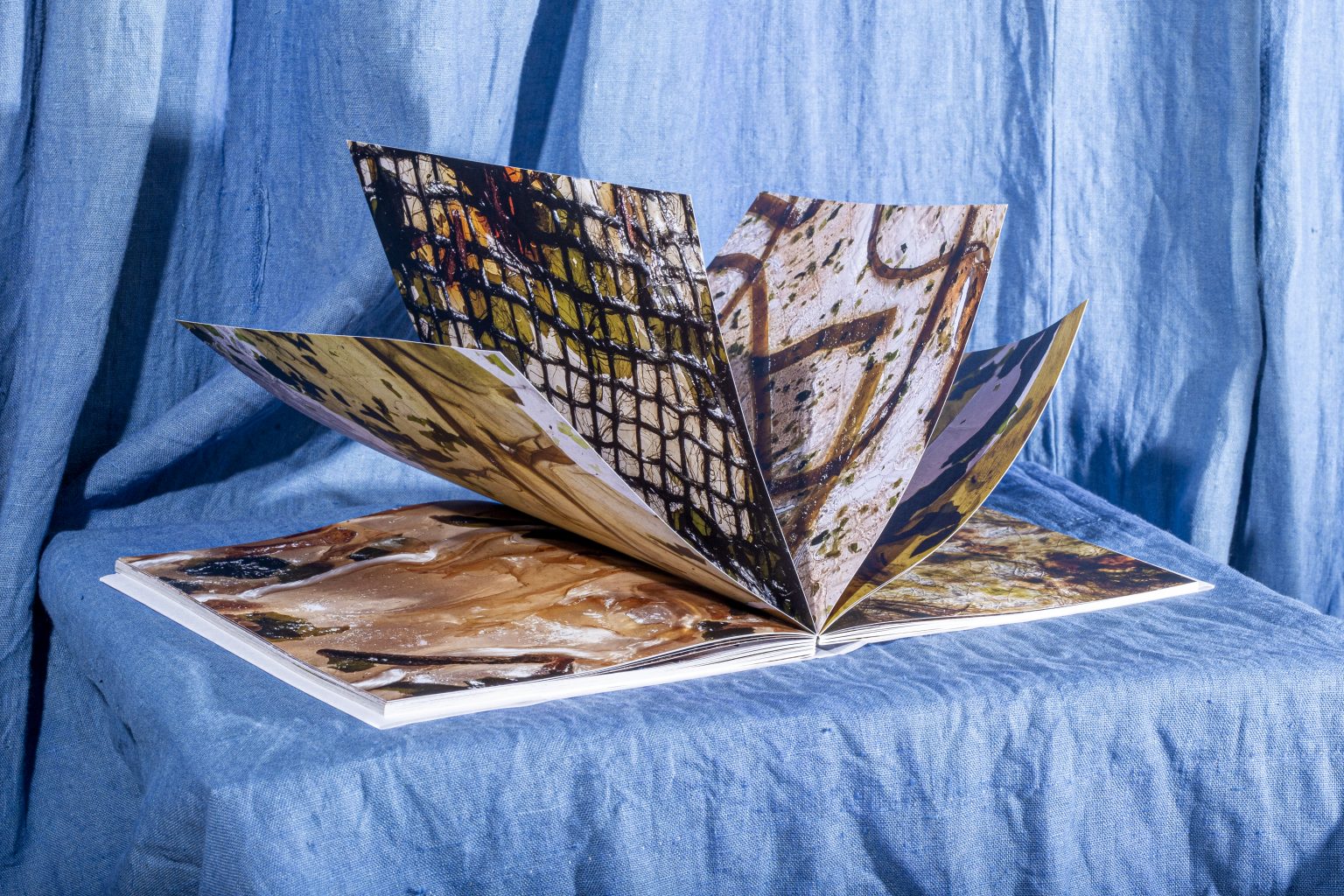
Art
Words by Reilly O’Byrne-Inglis
Art & Anecdotes by Bela Rofe
In an increasingly synthetic and disposable world, where instant gratification rules, artists like Bela Rofe strive to keep us grounded in process, exploration and reflection. As a speculative artist and textile researcher working at the intersection of fashion, ecology, and material futures, Rofe taps into the infinite potential of natural materials. Exploring the possibilities ripe in biomaterials through her work in textile construction has led Rofe to focus on the way in which material experiences can enhance our connection to living systems.
The Australian artist (now based in Berlin) leans into the growing posthuman and ecocritical art movements which focus on decentering Human beings and reminding us of the interconnectedness of all life; fauna, flora and beyond. Sparked by her innate “curiosity about if and how other organisms think, feel and communicate”, Rofe uses her work to remind us we live in a “more-than-human world”.
While these notions of interconnectedness with nature can be traced through Eurocentric concepts of Humanism and the more recent Posthumanism, they have been present in Indigenous cultures around the world for thousands of years (if not longer).
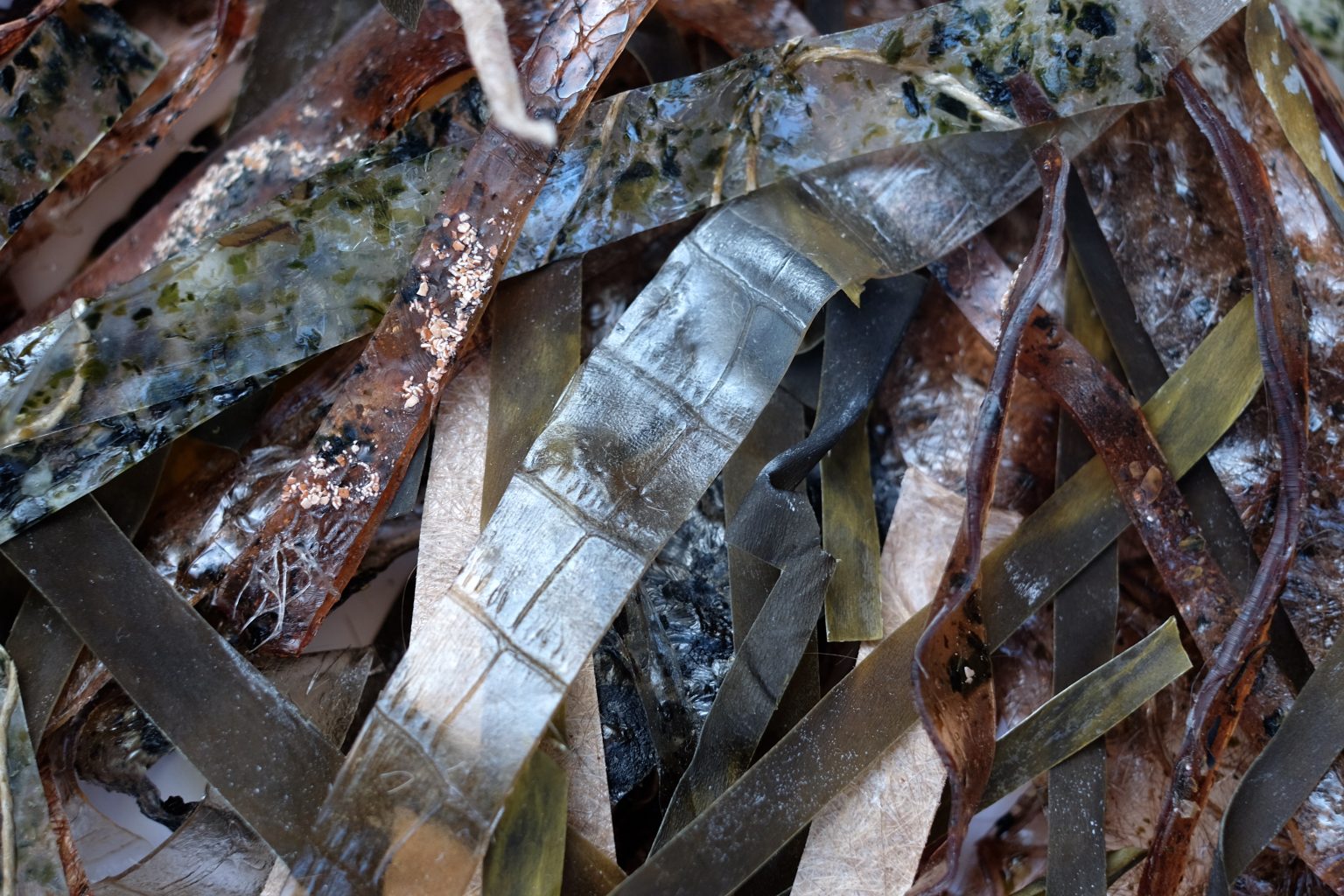
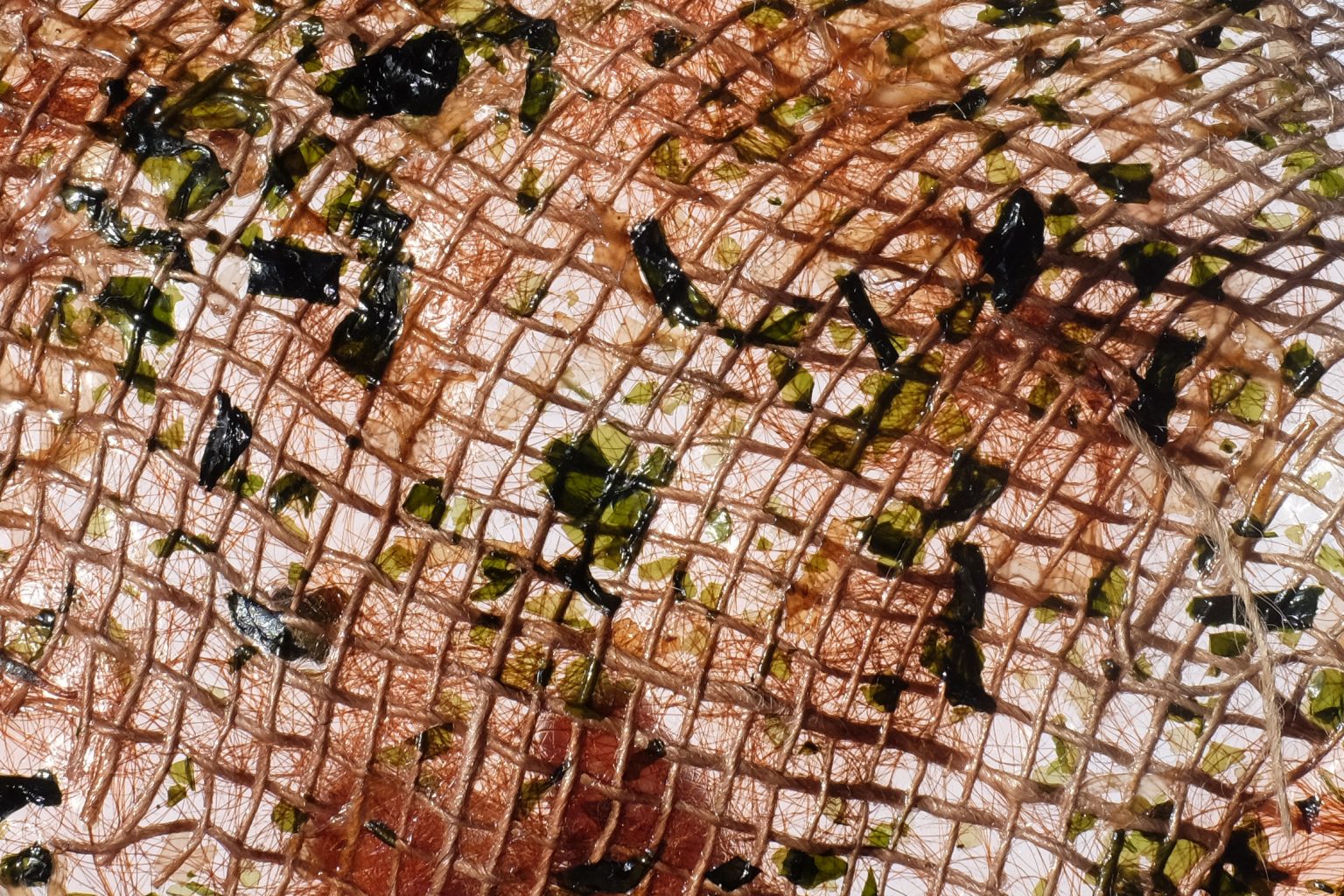
As an Australian artist, Rofe emphasizes the influence of growing up on the oldest continental crust on the planet, and of course, the home to Earth’s earliest evidence of life and oldest continuous culture; that of the Aboriginal and Torres Strait Islander People. Rofe reflects that the “ancient wisdom and ancient life embedded within this biosphere” has influenced her curiosity and reverence for natural elements.
After working in the fashion and textiles industry in both Sydney and London for 6 years, Rofe gained insight into the industry’s wasteful, unsustainable, and inhumane practices. She was struck by the “disconnection between humans and their consumer choices” and the impact these choices have on our environment. It was this insight into the lack of connection between the clothes we wear, their material and colour properties, and their supply chain realities, that ultimately set Rofe on her path toward healing the fashion industry.
This journey began at Fabricademy, a Textile and Technology Academy where Rofe was able to focus on the realities of the current fashion and textiles industry while exploring traditional and future craftsmanship, designing, prototyping and producing materials. It was through this program that Rofe conceptualised and biofabricated her textile artwork Weaving Water,
“an interwoven tapestry of algae and human hair that aims to reconnect humans to the origin of our evolution, water”
This entirely biodegradable artwork is a cornucopia of textures, shapes and earth tones which is striking enough in and of itself, but when Rofe details the creation of this work its meaning and significance become all the more impactful.
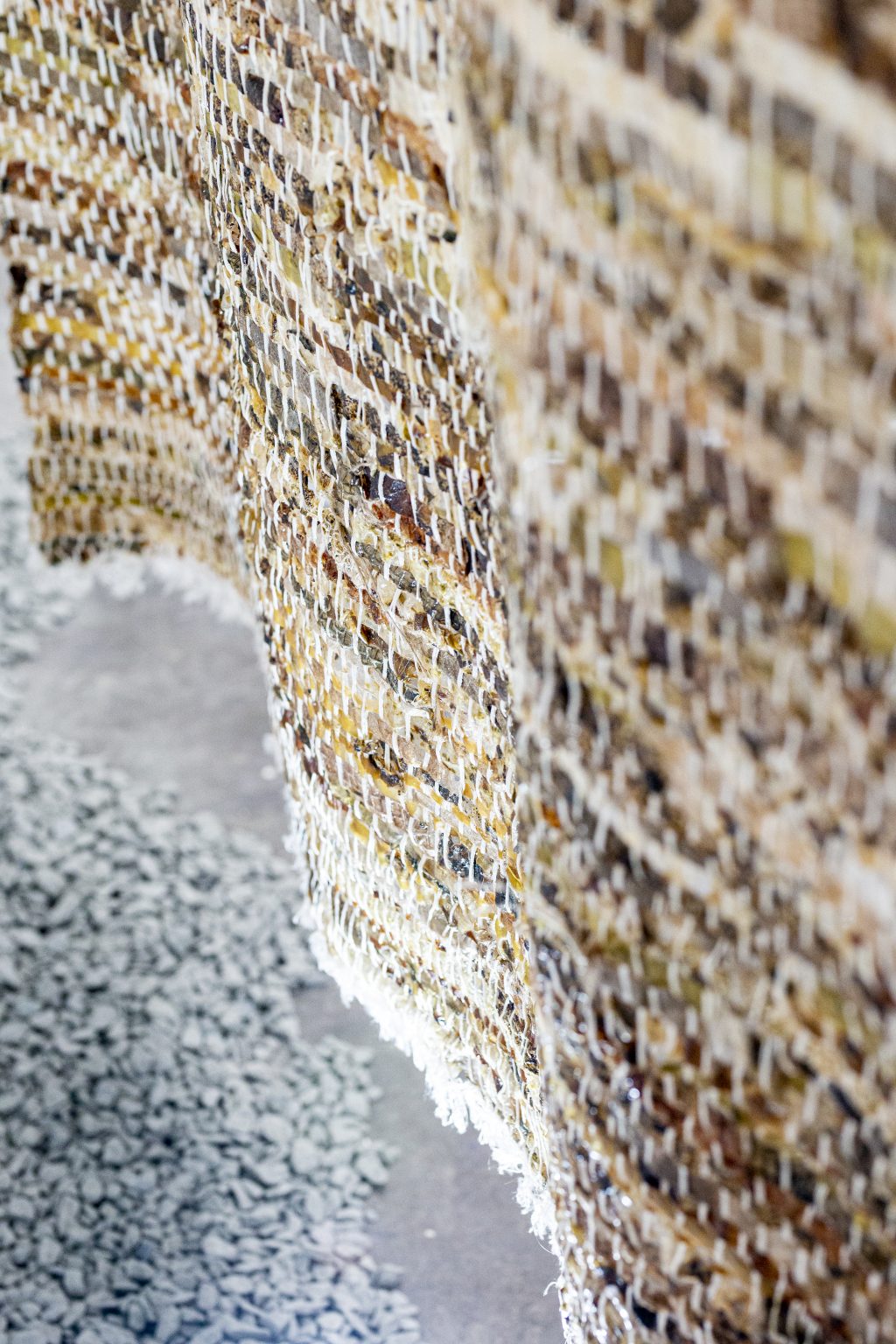
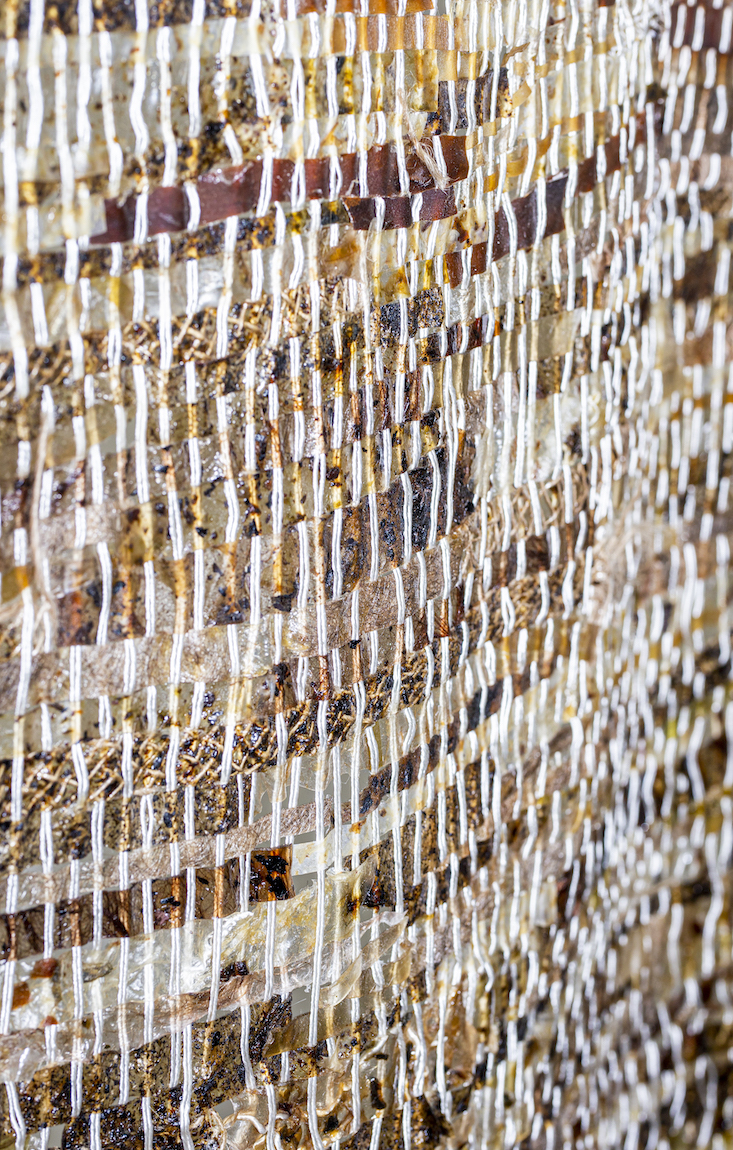
Weaving Water uses a plethora of techniques and materials including sodium alginate, agar agar, water, and vegetable glycerine to form bioplastics. Rofe combined these materials with homemade natural dyes, cast dried seaweeds, various plant matter, and other stiffening fibres, including human hair, into her bioplastic. After allowing these materials to dry over a 5-7 day period, Rofe cut them into wefts before using traditional techniques like manual sewing, knotting, woodwork, and wet felting, as well as digital fabrication techniques like laser cutting and CNC milling to construct the tapestry. The work truly utilizes a concoction of different recipes and experiments that entangle humans and nature into one material entity, asking the audience to consider our connection with the living systems that sustain us. By entangling these often overlooked and abundant water-based resources of algae and human hair, a new material ecology is created that can help us visualise humans and nature as one interconnected body.
Not only does Rofe’s work inspire us to consider our place in the ecosystem but it also shines a light on the opportunities available for designing with biomaterials, which, in the wake of resource depletion and a growing waste epidemic, is a space ripe for exploration. Weaving Water uses textile art as an agent to increase awareness about the connections between living systems. By entangling materials from the underworld (algae) with materials from the top-world (human hair), the artwork presents a new material ecology that helps humans feel re-connected to the natural order. Weaving Water was exhibited in Milan Design Week as part of Isola Design District’s exhibition ‘Materialized’ which featured works from researchers and designers from across the globe.
Rofe’s current research work, Symbiotic Skins is an expansion into wearable biomaterials, fusing her fields of fashion, art, and material research together; a fusion almost a decade in the making. Not only does Rofe’s work challenge audiences conceptually, but it pushes the boundaries of textile construction with a practical approach to sustainability. The artist’s passion for the mindful use of materials is as much fueled by her artistic perception as it is by a desire to build a more sustainable future. Rofe’s use of human hair leans both into notions of interconnectedness and the reality that, worldwide, approximately 300,000 tonnes of human hair goes to landfill annually. In the words of Rofe; “So much opportunity to design with this wasted natural resource!”
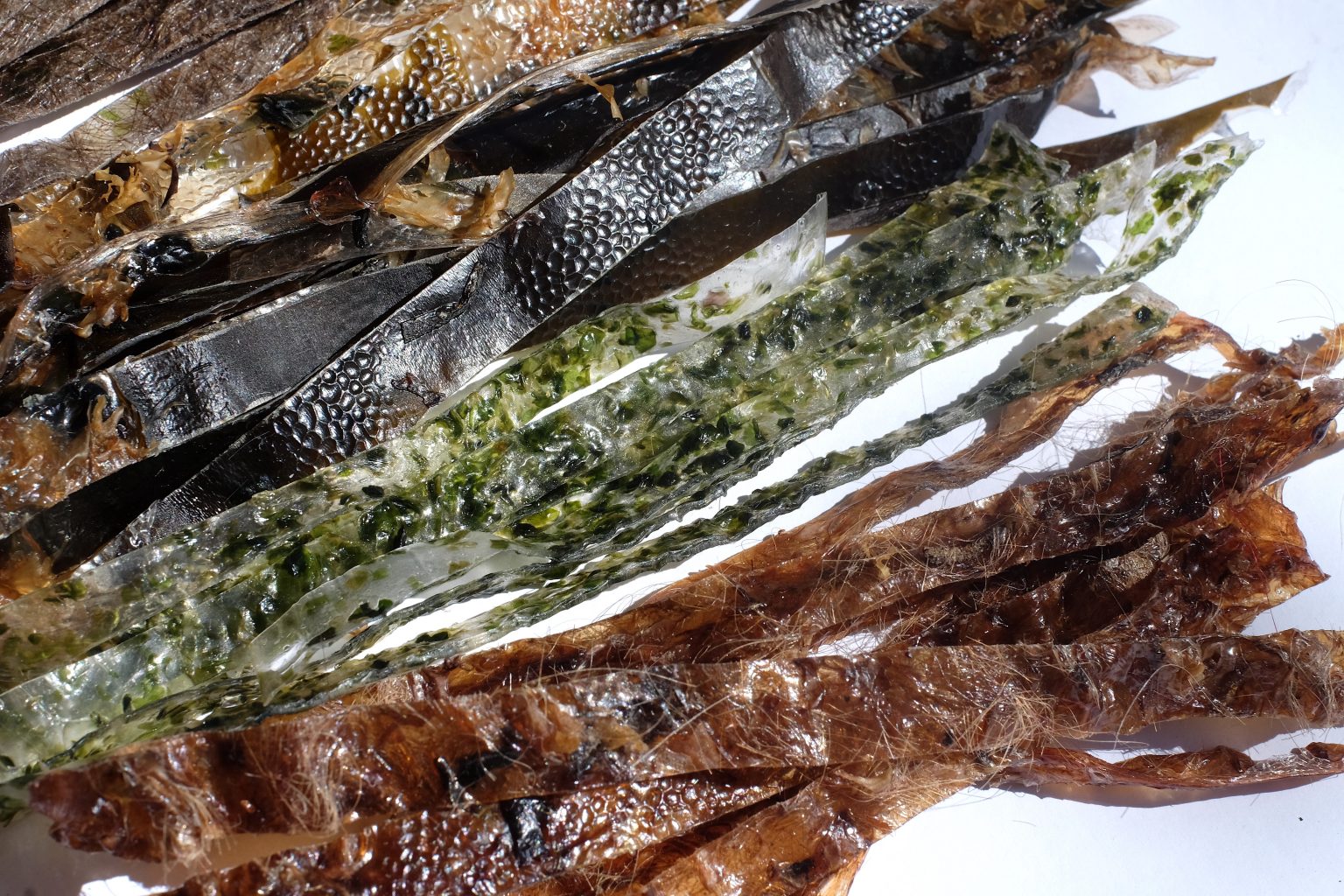
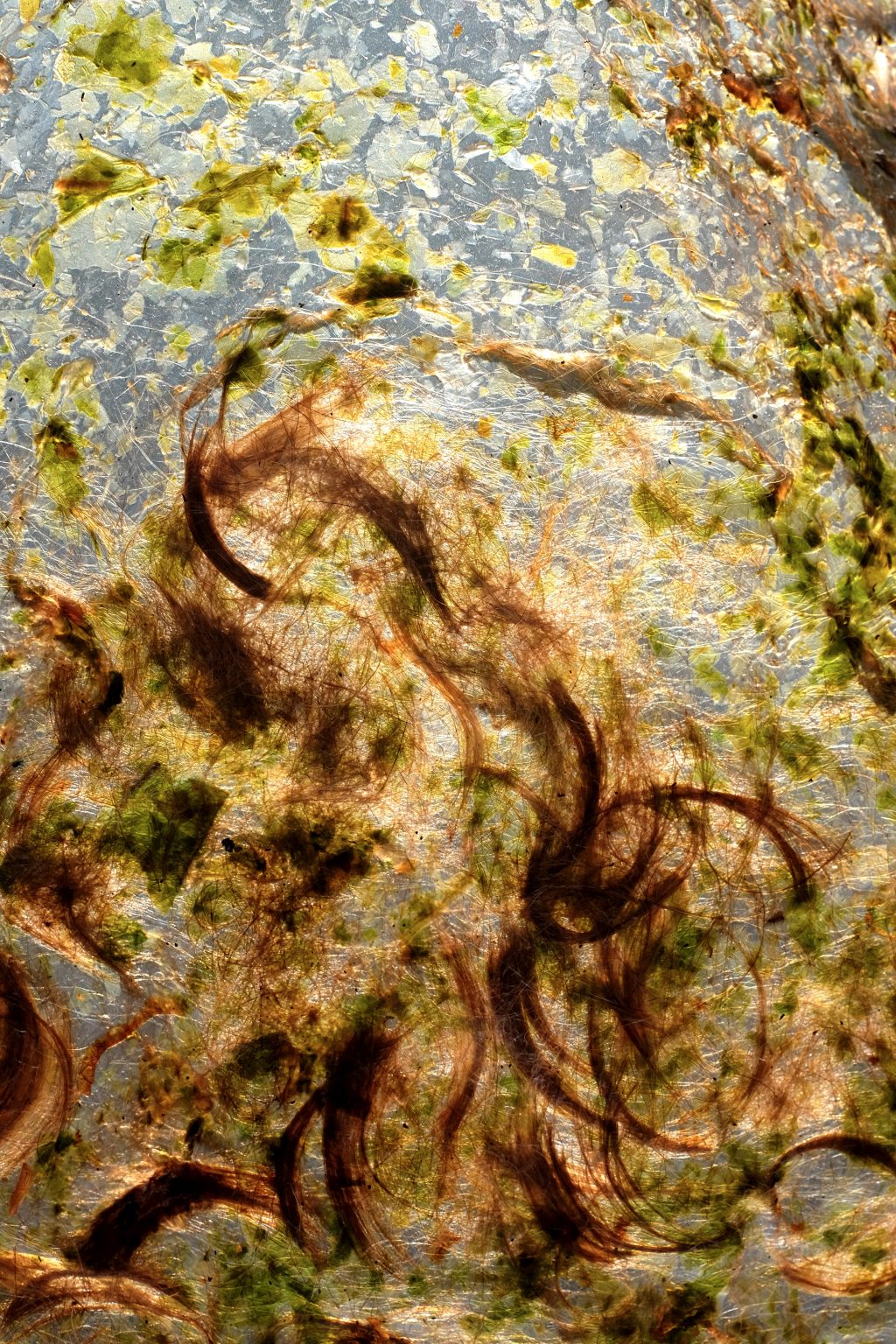
As well as working with algae and human hair, Rofe is introducing bacterial cellulose or kombucha leather into her practice. Rofe describes this material as a 100% biodegradable ‘living skin’ with high tensile strength, malleability and biodegradability and is undertaking work to improve its waterproofing. With the enormous environmental impact of leather, whether it be traditional leather which comes with the methane emissions and soil compaction caused by cattle as well as leached chemicals courtesy of tanning processes, or new plastic-based leather alternatives, kombucha leather (bacterial cellulose) is an industry shifting material. These possibilities extend beyond the Fashion and Textile Industries to reach the Food, Medical, and Construction Industries.
Outside of her own exhibited work and research, Rofe runs workshops on biodesign, biofabrication, and natural dyeing as well as working as a researcher and exhibition producer. When she’s not redefining our perceptions of the biosphere, Rofe enjoys exploring what makes a great bottle of wine; specifically natural wine (of course). The artist’s choice wine at present is Cambuix; a rare Rose blend by Cati Ribot produced in Mallorca (Balearic Islands).
Whether it be through biofabrication, or a great bottle of Rose, Rofe is constantly shifting our focus to awareness and appreciation of the natural world while reminding us we are, in fact, a small part of this biosphere.
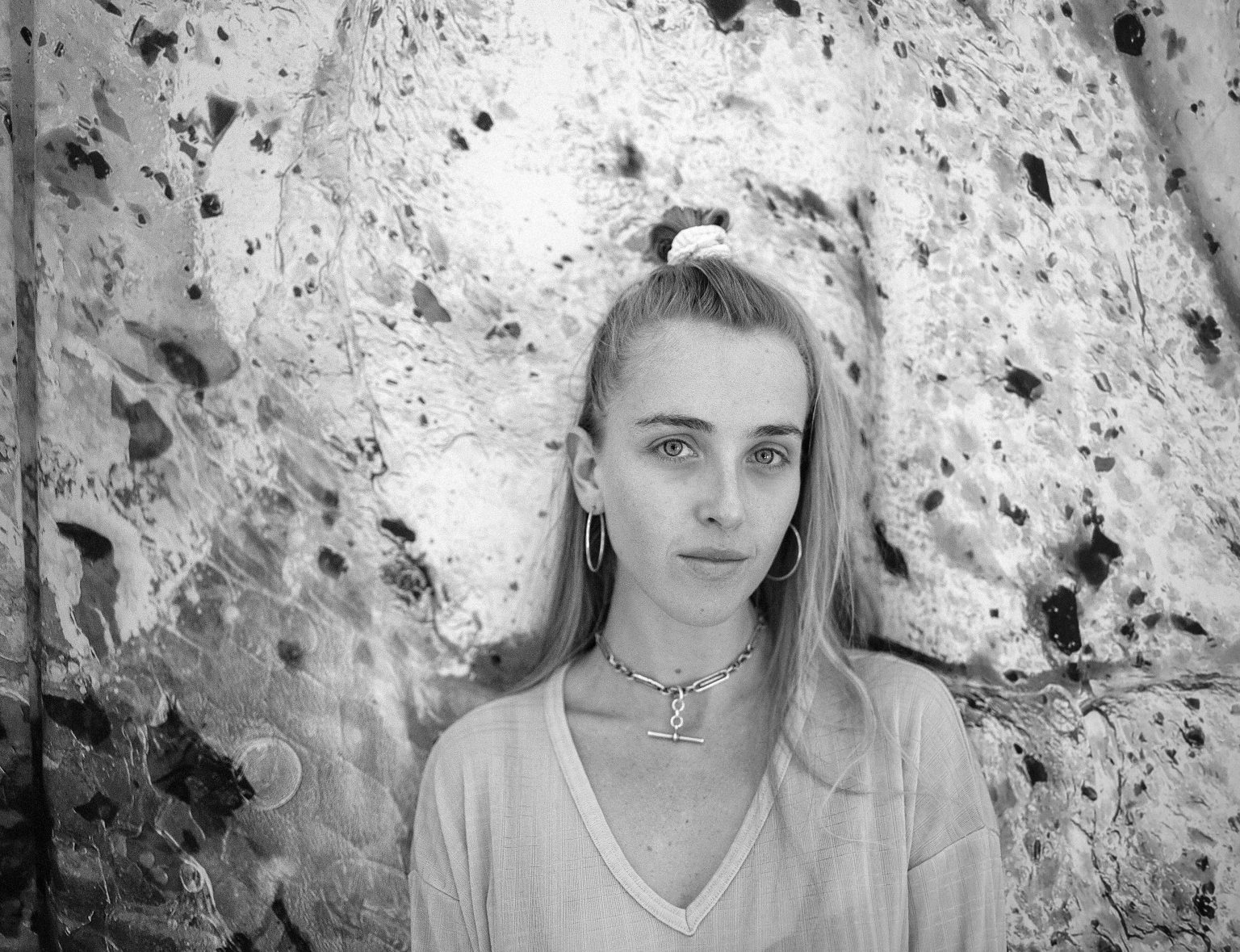
Loves Nailed It!, Confusing Experimental Theatre, Dave Bayley’s Falsetto, Botanical Drawing, and a mean Smoked Gouda.